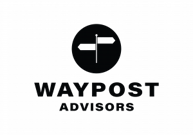Three Tips for Diversifying and Strengthening Your Supply Chain - Part 2
The past 2 years have shown that relying on a single raw materials source is a recipe for disrupted supply chains and an inability to meet customer demand. A robust supply chain is achieved not only by diversity, but also reliability and resilience. An effective procurement and supply chain organization should be one that brings value to the overall organization, which is accomplished by having the right strategic and tactical approach.
We’ve outlined three actionable tips that can be used to consider how to build a more diverse and robust supply chain.
Develop A Strategy
To build a reliable supply chain, consider a long-term approach. What are your immediate goals and long-term goals? Be specific about these goals and how they are related. Do you have performance metrics in place and which of these metrics are falling behind expectations?
How do you need your employees to proceed to excel at their jobs and make these goals a reality? Asking employees to address these concerns without a long-term objective may have them floundering from one task to the next without clear direction in their work, resulting in a lack of improvement in employee growth.
Developing a strategic supply chain and procurement approach involves having a clear vision of what you need to accomplish and understanding the resources that will be required to deliver that vision. Some things to consider may include:
-
What do you need from your organization?
- Industry insights
- Demand forecasting
- Raw material reliability
- Cost reduction/mitigation
- Strategic vs. transactional
-
How does your plan tie into your inventory/working capital strategy?
- “Optimal” inventory levels with continuous monitoring
- Do you have appropriate metrics in place to understand impacts?
- Understand what drives needs for inventory
- Communication with finance to understand the financial and operating impact
-
What approach do you need with your supply base?
- Commodity (multiple supplier options, RFQ approach) vs. highly specialized (single-sourced, relationship driven)?
-
Is your procurement team better described as strategic sourcing or order placement?
- Do you have the capabilities and tools to be proactive vs. reactive to industry changes and supply chain disruptions?
- Disruptions may include shipping delays (or lack of shipping options), unavailability of product by your suppliers, global events that cut off a key supplier, supplier bankruptcy, or rapid price escalation to name a few.
- How much risk is your company willing to take on in your supply chain?
- Risk level vs. cost level
- Is your product development team synced with your procurement organization to take purchasing challenges into account during product design?
- Do you have the resources and expertise required to undertake a change initiative?
- Do you have the capabilities and tools to be proactive vs. reactive to industry changes and supply chain disruptions?
To get started, convene a strategy planning group consisting of your company’s executives (CEO, CFO) and leadership from key functions (Supply Chain, Operations, Procurement, Sales/Marketing, Finance). Results often require a company-wide change initiative as multiple functions will need to contribute in order for you to realize true success. Sales needs to understand demand, which drives manufacturing, raw material, and inventory decisions. Underlying it all are the financial impacts that are critical to helping to shape choices and the right metrics are required to ensure you’re making informed decisions. Consider going through these areas to identify gaps in data and existing knowledge as well as areas to prioritize. Assign owners within your organization to ensure the project keeps moving forward and accountability is maintained.
Our supply chain and operations advisors are experienced in many manufacturing and distribution companies. We help find the best way to optimize your supply chain management and get the results you want.
